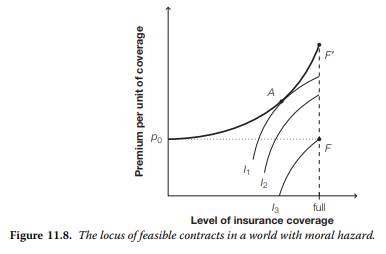Imperfect competition and moral hazard. Some economists have argued that moral hazard and monopolistic health care markets are two socially inefficient problems that partially cancel each other out.
a. Relative to the optimal level of health care Q∗ , how much health care is provided in the presence of moral hazard? Assume perfectly competitive health care markets.
b. Relative to the optimal level of health care Q∗, how much health care is provided in the presence of monopolistic health care markets? Assume no moral hazard.
c. Write a one-sentence defense of the argument that moral hazard and imperfectly competitive health care markets could combine to provide a good level of health care provision Q.
d. Gaynor and Vogt (2000) contend that this argument is not quite right. Draw your own version of the Pauly tradeoff diagram (Figure 11.8) with a locus of feasible contracts under moral hazard and perfect competition in the health care market. Now draw a new focus of insurance contracts under imperfect competition. [Hint: Imperfect competition raises price levels, so per-unit premiums will now be higher than before at every insurance level.

e. Draw a plausible set of indifference curves that shows the optimal contract under perfect competition A∗ and the optimal contract under imperfect competition A’ .
f. How would you refute the argument you made in Exercise 14(c)?

